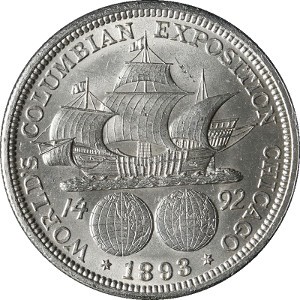
Later coin #2, #8 and #38 were given to a friend of the businessman and later passed on to his son. They divided the coins between them with the businessman getting all the even numbered coins and the President taking the odd numbered ones. So the Board President got together with the businessman who had ordered the first 500 coins. So Ellsworth wrote the Superintendent and got him to recommend that they be distributed along Col. The Board President was not pleased to find the 100 extra proof coins and he took possession of ALL of them. When the first keg arrived, it was opened and the first 500 business strikes were turned over to the purchaser, but the special coins were not in the keg! Unfortunately, Ellsworth was not there when the next keg was opened. All Ellsworth had to do then was be there when the keg was opened. The extra coins were needed for presentation purposes. Armed with this letter he then approached the Mint Superintendent with the instructions to make those coins, and the first 100 coins as proofs, then make the business strikes. So Ellsworth got him to sign an order to make the 400th, 1492nd, 1892nd, and the first 1893 coin as proofs. He was told this was impossible because another businessman had already ordered the first 500 coins. Before the date of the striking Ellsworth went to the President of the Board and requested the first one hundred coins after the #1 coin. Now all Ellsworth had to do was get his hands on that #2 envelope. This coin, along with its accompanying witnessing documents, and the cancelled check for $10,000, is in the collection of the Field Museum of Natural History. But when it was examined, there was a flaw in the planchet! You can’t give the Remington Company a flawed coin for their $10,000! So the first coin was placed in envelope #2 and another unflawed coin was struck as the “#1” coin.

At the striking ceremony Ellsworth selected the blank, gave it to the coiner and the first proof Columbian half dollar was struck.

He was to oversee the striking of the first coin. James Ellsworth, a very well heeled collector who had managed to get on the Columbian Exposition Board of Directors.
1893 COLUMBIAN EXPOSITION HALF DOLLAR FREE
As a publicity stunt, for the free advertising it would generate, Remington Typewriter Company agreed to purchase the very first half dollar for $10,000. Nearly one million coins dated 1892 were struck. They also withheld nearly 1.4 million of the coins the organizers paid for to make sure there would be funds to pay for the awards medals that had been ordered for the exhibits and judges. They also didn’t consider that $1 for a 50 cent piece would make it a rather expensive souvenir.

That will give you $5 million.” Of course they missed the part that the fair would have to pay $2.5 million so they would only have half the money they needed. “No way, but what we will do is strike $2.5 million in commemorative half dollars you can sell for a dollar each. The organizers were running short, the opening was going to be delayed to October 21st, nine days after the anniversary (They didn’t make that either and the fair didn’t open until May 1893.) A grant for $5 million was requested from Congress. But like all events of this size finances were always a problem. Little Egypt on the other hand was a dancer, who introduced belly dancing to a society of Victorian morality.

The Ferris Wheel was 264 ft high (20 stories) and had thirty six cars that could hold sixty people each. For all it’s grandeur, it is still best known today for two of its exhibits from the entertainment area, the worlds first Ferris Wheel, and Little Egypt. The exposition was huge, over 600 acres and over 200 buildings.įorty six nations had exhibits at the fair. Marking the four hundredth anniversary of Christopher Columbus’s discovery of America, and the first World’s Fair to be held in the United States. The Columbian Exposition in Chicago was going to be a spectacular event.


 0 kommentar(er)
0 kommentar(er)
